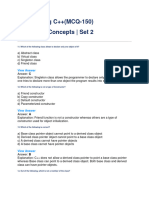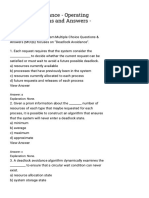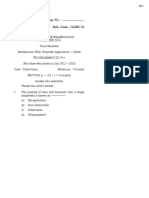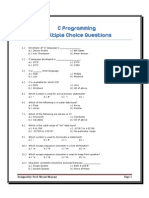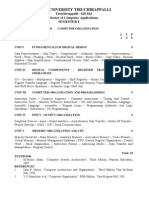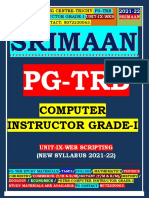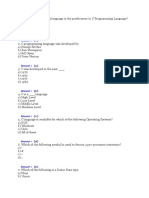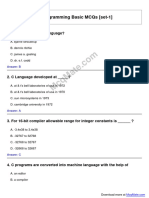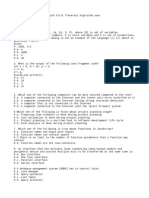100% found this document useful (1 vote)
252 views3 pagesPG TRB CS Objective Question Bank
The document is a question bank for PG TRB Computer Science, covering various topics including C Programming, Data Structures, Operating Systems, Database Management Systems, Computer Networks, Java Programming, Software Engineering, Compiler Design, Digital Electronics, Computer Architecture, Theory of Computation, and Web Technologies. Each section contains multiple-choice questions with answers provided. The content is designed to help students prepare for examinations in computer science.
Uploaded by
ArunprakashCopyright
© © All Rights Reserved
We take content rights seriously. If you suspect this is your content, claim it here.
Available Formats
Download as PDF, TXT or read online on Scribd
100% found this document useful (1 vote)
252 views3 pagesPG TRB CS Objective Question Bank
The document is a question bank for PG TRB Computer Science, covering various topics including C Programming, Data Structures, Operating Systems, Database Management Systems, Computer Networks, Java Programming, Software Engineering, Compiler Design, Digital Electronics, Computer Architecture, Theory of Computation, and Web Technologies. Each section contains multiple-choice questions with answers provided. The content is designed to help students prepare for examinations in computer science.
Uploaded by
ArunprakashCopyright
© © All Rights Reserved
We take content rights seriously. If you suspect this is your content, claim it here.
Available Formats
Download as PDF, TXT or read online on Scribd
/ 3





